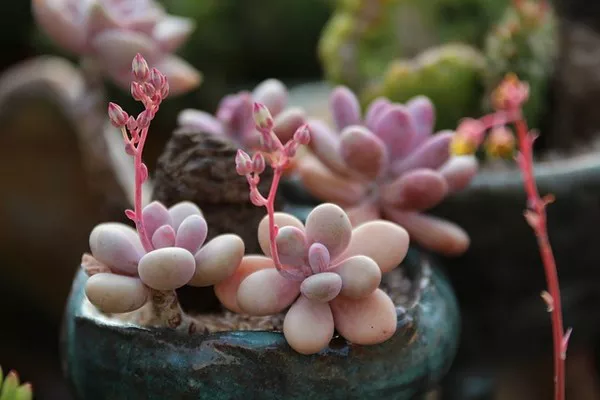Succulents have surged in popularity in recent years, adorning countless homes and offices with their unique shapes and vibrant colors. These resilient plants are beloved for their low maintenance requirements and ability to thrive in a variety of environments. However, proper care is still essential to ensure the health and longevity of these small wonders. In this comprehensive guide, we’ll explore everything you need to know about caring for small succulent plants.
Understanding Succulents
Before delving into care tips, it’s crucial to understand what makes succulents unique. Succulents are a diverse group of plants characterized by their thick, fleshy leaves, stems, or roots that store water. This adaptation allows them to survive in arid conditions with minimal rainfall, making them ideal candidates for indoor cultivation.
There are thousands of succulent species, ranging from the popular Echeveria and Aloe vera to lesser-known varieties like Haworthia and Sedum. Each species has its own specific care requirements, but general principles can be applied to most succulents.
Lighting Requirements
Proper lighting is essential for the health of succulents. These plants thrive in bright, indirect sunlight, mimicking their natural habitat in arid regions. Place your succulents near a south or west-facing window where they can receive ample sunlight throughout the day. If natural light is insufficient, consider supplementing with grow lights to ensure optimal growth.
Avoid placing succulents in direct sunlight for prolonged periods, especially during the hottest parts of the day. While some species can tolerate full sun, others may become sunburned or develop unsightly patches if exposed to intense light.
Watering Techniques
One of the most common mistakes in succulent care is overwatering. Succulents are adapted to store water in their leaves and stems, allowing them to withstand drought conditions. Therefore, they are susceptible to root rot if kept too wet.
Water your succulents thoroughly but infrequently. Allow the soil to dry out completely between waterings, typically every 1-2 weeks depending on environmental factors such as humidity and temperature. When watering, soak the soil until water drains out of the bottom of the pot, ensuring that the entire root system receives moisture.
During the winter months or periods of dormancy, reduce watering frequency to prevent waterlogged soil and root rot. Succulents are dormant during this time and require less water to survive.
Soil and Potting
Choosing the right soil and potting containers is crucial for succulent health. Use a well-draining potting mix specifically formulated for succulents and cacti. These mixes typically contain materials like perlite, sand, or gravel to promote drainage and prevent waterlogged soil.
Select pots with drainage holes to allow excess water to escape freely. Terra cotta pots are an excellent choice as they absorb excess moisture from the soil, helping to prevent overwatering.
When repotting succulents, gently remove them from their current container and inspect the root system for signs of rot or overcrowding. Trim any damaged or rotting roots before transferring the plant to its new pot with fresh soil.
Temperature and Humidity
Succulents thrive in warm, dry climates and prefer temperatures between 60-80°F (15-27°C). Protect them from extreme temperature fluctuations and drafts, which can stress the plants and affect their growth.
While succulents are adapted to low humidity environments, they may benefit from occasional misting during periods of dryness, especially indoors where humidity levels can be low. Avoid misting excessively, as too much moisture on the leaves can promote fungal diseases.
Fertilization
Succulents have relatively low nutrient requirements compared to other plants, but occasional fertilization can help promote healthy growth and vibrant foliage. Use a balanced, water-soluble fertilizer diluted to half strength during the growing season (typically spring and summer). Apply fertilizer every 4-6 weeks, being careful not to overfeed, which can cause salt buildup in the soil.
During the winter months or periods of dormancy, suspend fertilization as succulents require minimal nutrients during this time.
Pest and Disease Management
While succulents are relatively resistant to pests and diseases, they can still fall victim to common problems such as aphids, mealybugs, and fungal infections. Regularly inspect your plants for signs of pests or damage, especially on the undersides of leaves and in crevices.
If pests are detected, isolate the affected plant immediately to prevent further infestation. Treat minor infestations with insecticidal soap or neem oil, applying according to the manufacturer’s instructions. For severe infestations or persistent problems, consider seeking advice from a professional or utilizing organic pesticides.
To prevent fungal diseases, avoid overwatering and ensure proper air circulation around your succulents. Remove any dead or decaying plant material promptly and maintain a clean growing environment.
Propagation
One of the joys of growing succulents is the ease with which they can be propagated. Many species can be propagated from stem or leaf cuttings, allowing you to expand your collection or share plants with friends and family.
To propagate succulents from stem cuttings, simply snip a healthy stem from the parent plant and allow it to callus over for a few days. Then, place the cutting in a well-draining potting mix and water lightly. Keep the soil consistently moist until roots develop, typically within a few weeks.
Leaf cuttings can be taken by gently removing a healthy leaf from the parent plant and allowing it to callus over for a few days. Then, place the leaf on top of a well-draining potting mix and mist lightly. Roots will eventually emerge from the base of the leaf, followed by new growth.
Conclusion
Caring for small succulent plants can be a rewarding and enjoyable experience. By providing proper lighting, watering, soil, and environmental conditions, you can ensure that your succulents thrive and flourish for years to come. Remember to observe your plants regularly and adjust your care routine as needed to meet their individual needs. With a little attention and care, your small succulent garden will be a source of beauty and tranquility in any space.


